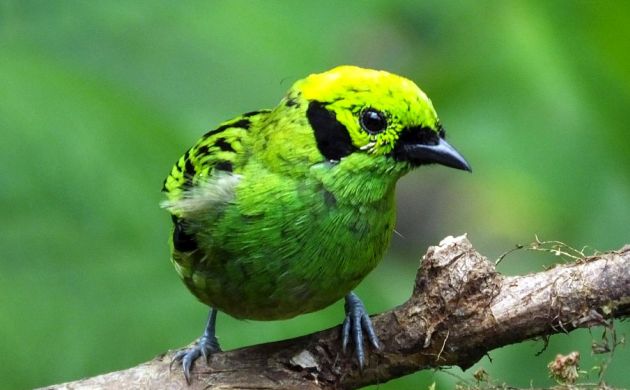
I write this on the final day of the year, the last bit of 2019. The point of orbit for which the Earth starts and completes its merry-go-round the Sun is subjective but according to eBird, now is the time. If birders still fancied adding that Purple Finch, Ivory Gull, or Three-wattled Bellbird in 2019, December 31st would have been their final chance. For birders doing the year bird thing, the last day of the year is likely too late for most new additions but, luckily, those who don’t want to venture outside with optics in hand can always mark the end of the year by sharing tales of favorite sightings with favorite fellow birders. These are some of mine:
The umbrellabird
There are three species of crow-like cotingas with odd hairdos known as umbrellabirds, the Bare-necked Umbrellabird is the one that lives in Costa Rica. Because it can’t survive in formerly forested areas that it needs to migrate to during half of the year, this mega is officially endangered and is mostly why it’s so hard to see. Since I rarely see one, enjoying views of a male in the buffer zone of Braulio Carrillo National Park with two clients was fantastic. The bird foraged on fruit in the upper understory, moving the vegetation almost as much as a monkey does.
The RUFF!
In a year of megas, this was one of the top birds for sure. In terms of rarity, it probably gets beat by the country first Red-breasted Merganser that showed in Limon just the other day (!) but the Ruff was also a major birding occurrence because this third country record stayed long enough for a good number of local birders to go and see it. Mary and I were likewise successful with that memorable twitch, enjoying prolonged views of the pseudo yellowlegs in good light.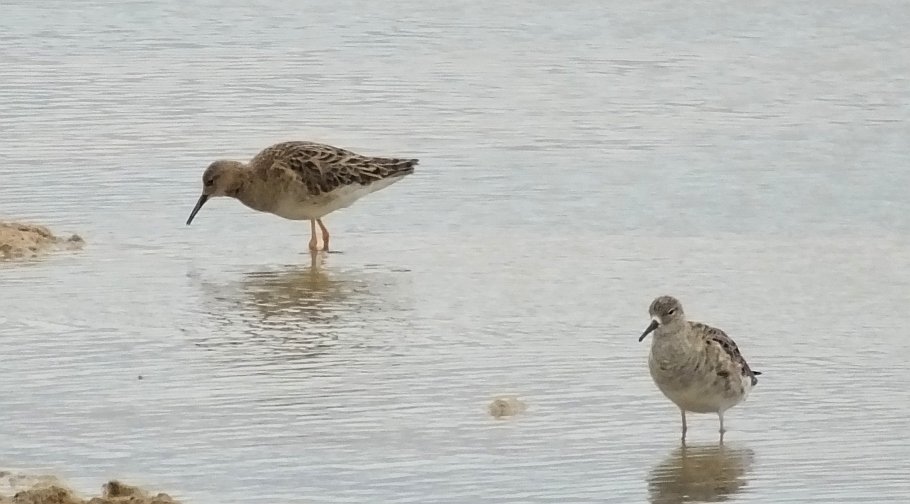
Ruffs from Israel, the one in Costa Rica kind of looked like the top bird.
Bird counts
Sharing birds with other local birders is always a highlight. This year, we counted the avian side of life in Cano Negro, at and near Finca Luna Nueva, and at the Rainforest Adventures site just outside of Braulio Carrillo. We were accompanied by plenty of rain but we still saw and enjoyed birds with other birders.
Three days, three hawk-eagles
During a memorable guiding trip in June, we hit the jackpot with all three species of hawk-eagles in just a few days. Luck always plays a role for seeing these monster goshawks but so does looking for them in the right places. The rare Black-and-white Hawk-Eagle showed at a spot with blocks of lowland rainforest north of Quinta Sarapiqui, the Black Hawk-Eagle was defending a territory in lowland rainforest near Cope’s place (and was seen thanks to this talented local artist). The Ornate Hawk-Eagle was noticed at the last minute on our drive towards San Jose through the dense rainforests of Braulio Carrillo National Park.
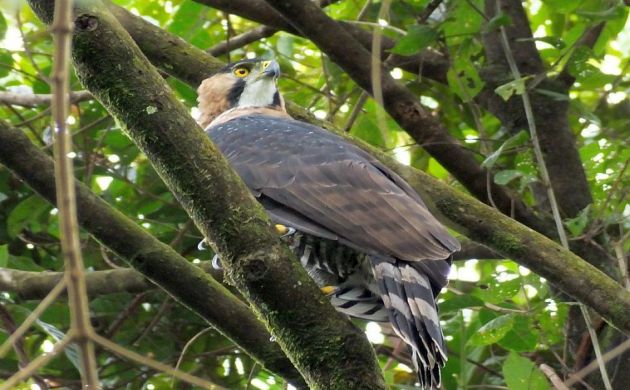
An Ornate from another day.
Buff-fronted Quail-Dove on a feeder
Not a rare bird but like all quail-doves, a professional skulker and thus typically glimpsed as it scurries into hiding. At Cinchona, at least two have been bucking that trend by visiting a fruit feeder. Although most times, they still skulk down below the feeder, on a couple of occasions, I had one of them jump right up and partake in papaya on the feeder platform. One also visits a fruit at Serge Aria’s place, Casa de Tangara Dowii.
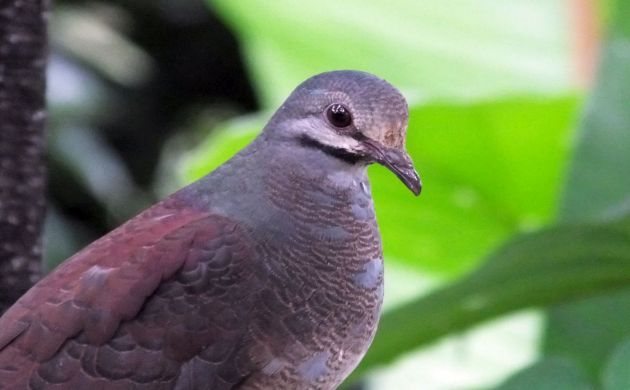
Quetzals, hummingbirds, and tanagers
No matter how often one sees them, these birds are too spectacular to not be highlights. Resplendent Quetzals do indeed live up to their name and are uncommon yet regular at any number of highland sites (fruiting trees on the road to Poas could be good for them within a month!), hummingbirds are always surreal and a treat to watch (I saw 46 species this year), and it’s hard not to be in awe over small colorful birds that flock together.

Emerald Tanager-one of several beautiful tanagers that live in Costa Rica.
San Vito Birding Club meeting
In May, thanks to an invitation from the San Vito Birding Club, a group that has done excellent work in promoting birding in that part of the country, Mary and I paid a visit to this excellent area in May. This memorable trip was replete with good company and hosting provided by the birding club president, Greg Homer, and lots of great birding with a dedicated group of local San Vito birders. Lance-tailed Manakin and my country Mouse-colored Tyrannulet were just a couple of the many birding highlights from this trip.
I could say so much more because no matter where you bird, during your annual trip around the sun, every birding day can be a highlight. The wintering Orchard Orioles chattering and foraging in the flowering bush out front. The White-tailed Kites dancing in aerial place. The sleeping Long-billed Curlew that Mary and I espied at the salt ponds of Punta Morales. The trip up and into wind and rain of Irazu Volcano with Chris Balchin, Guy Kirwan, and John Van Dort when few of the rare targets showed but talking about soaring Harpy Eagles in Brazil, bird distribution in Honduras, and the gains of the Neotropical Bird Club was priceless. These experiences, guiding, and other aspects of birding were gifts, I look forward to 2020. Wishing readers of 10,000 Birds a wonderful 2020!


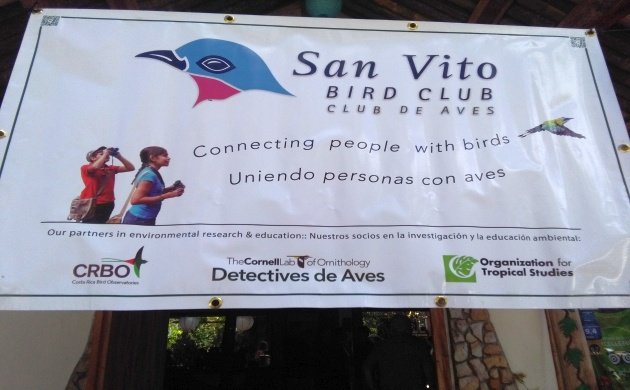











Happy New Year to you too, Pat, and maybe our paths will cross again in 2020!
@Mary Ann Good- Same to you Mary, yes, I hope so!
Yes birding at Irazu was not easy, a good day out none the less. The other trips we did together were more productive, many thanks for that, especially the tawny-chested Flycatcher.
Wishing a productive 2020.